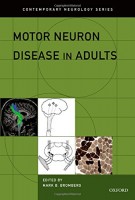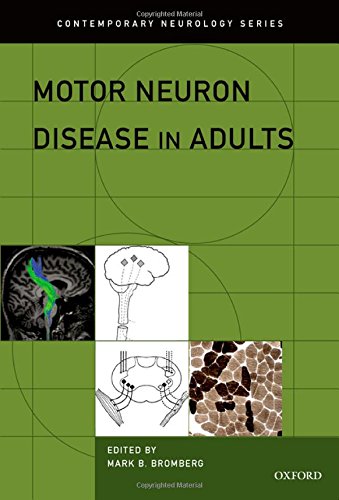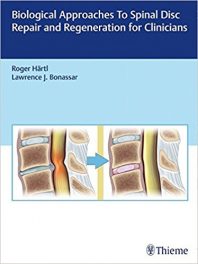 Editor: Mark B. Bromberg, MD; Series Editor: Sid Gilman. MD
Editor: Mark B. Bromberg, MD; Series Editor: Sid Gilman. MD
Publisher: Oxford University Press – 336 pages
Book Review by: Nano Khilnani
This book takes a look in general at adult forms of motor neuron disease (MND), a rare group of disorders first recognized in the early 19th century. In particular it looks at similar nerve diseases on human movement functions such as amyotrophic lateral sclerosis or ALS (also known as Lou Gehrig’s disease), primary lateral sclerosis (PLS), and progressive muscular atrophy (PMA).
Currently there are no clinically effective treatments for these diseases, although much has been studied and written about them. Some of what has been recently discovered about these diseases – in other words, valuable updates – can be found in this unusual book that takes a very close look into this field of inquiry within neurology.
Since the initial volume entitled Amyotrophic Lateral Sclerosis in the Contemporary Neurology Series was published in 1998, some 11,000 articles (relating to searches on ALS or NMD) have been published in PubMed. They represent advances in the knowledge base on such disorders with regards to:
- Genetic implications
- Disease progression
- The association of ALS with frontotemporal lobe dementia (FTD) and syndromes
Dr. Mark Bromberg, a specialist in neuromuscular diseases, has gathered together for this book, evidence-based articles from 30 experts on this subject. Almost all of them are from the United States, but three are from the United Kingdom, and two from Italy.
In this book, only articles “that represent significant contributions for clinical features, diagnosis, pathophysiology, clinical trials, and patient management” are presented in it. The writings deal with many aspects of the nerve disease group known as MND.
If you are a student, practitioner, or researcher in this area, you will find much useful information in the 33 chapters of this unique book:
- History of the Recognition of Motor Neuron Disease
- Nomenclature and Classification of Motor Neuron Disease
- Clinical Anatomy, Physiology, and Pathology of Motor Neuron Disease
- Clinical Features of Motor Neuron Disease
- Frontotemporal Dysfunction and Dementia
- Laboratory Tests for Motor Neuron Disease
- Biomarkers for Motor Neuron Disease
- Imaging in Motor Neuron Disease
- Diagnostic Criteria for Motor Neuron Disease
- Differential Diagnosis for Motor Neuron Disease
- Motor Neuron Disease Progression
- Epidemiology of Amyotrophic Lateral Sclerosis
- Genetics of Amyotrophic Lateral Sclerosis and Frontotemporal Dementia
- Genome-Wide Approaches to Identify Amyotrophic Lateral Sclerosis-Associated Genes
- Pathology of Amyotrophic Lateral Sclerosis and Frontotemporal Lobar Degeneration
- Convergence and Divergence in Amyotrophic Lateral Sclerosis Syndrome
- Genetics, Molecular Pathways, and Molecular Mechanisms
- Immunologic Aspects of Amyotrophic Lateral Sclerosis
- Cyanobacteria, Amyotrophic Lateral Sclerosis, and the BMAA Hypothesis
- Animal Models of Adult Motor Neuron Disease
- Multidisciplinary Clinics and Practice Parameters and Guidelines
- Allied Health and Other Providers
- Respiratory Assessment and Management
- Nutritional Assessment and Management
- Communication Assessment and Management
- Psychological and Psychiatric Assessment and Management
- Symptoms and Management
- Intimacy, Sexuality, and Pregnancy
- Quality of Life
- Caregiver Issues
- End-of-Life Care
- Costs of Amyotrophic Lateral Sclerosis Care
- Clinical Trial Designs in Amyotrophic Lateral Sclerosis
- Stem Cell Therapy For Motor Neuron Disease
Each chapter starts with a brief section (a few short paragraphs) entitled Background and New Points that first gives you a summary of and description of the disease in question or the title chapter subject. It then informs you what have been new or recent discoveries about it.
For example, in chapter 3, Clinical Anatomy, Physiology, and Pathology of Motor Neuron Disease, motor neuron disease is referred to as “primarily death of upper motor neurons (UMNs) or lower motor neurons (LMNs) and the clinical features of ALS, PLS, and PMA are based on the consequences” (of the motor neuron disease or MND).
The new pieces of information this section provides on MND are:
- The frontotemporal lobe is dysfunctional as evidenced from stains after post-mortem examination
- Certain discoveries on the physiology of cortico-spinal connections based on non-invasive electro-diagnostic studies. The process of diagnosis is helped “having in mind anatomic and physiologic features.”
- The motor symptoms of MND can be differentiated clinically for the three specific neurologic diseases: ALS, PLS, and PMA
This book represents an outstanding contribution to the study and spread of knowledge on motor neuron disease. It greatly adds to our understanding of it.
Series Editor:
Sid Gilman, MD, FRCP is William J. Herdman Distinguished University Professor of Neurology at the University of Michigan.
Editor:
Mark B. Bromberg, MD, PhD is Professor of Neurology at the University of Utah in Salt Lake City, Utah. He received a doctoral degree in electrophysiology and a medical degree and training in neurology. He has combined his basic research experience with his specialization in neuromuscular disorders. In particular he has been involved in the care of amyotrophic lateral sclerosis (ALS) patients for 25 years. His research activities in ALS include assessing quality of life, electro-diagnostic techniques for diagnosis and monitoring progression, and clinical trials.
Contributors:
Stanley H. Appel, MD
Sandra Anne Banack, PhD
Robert Bowser, PhD
Kerstin E. Braunstein, PhD
Lucie I. Bruijn, PhD
Tracie A. Caller, MD
Liam L. Chen, MD, PhD
Adriano Chio, MD
Christina Chrisman, MD
Lauren Elman, MD
Eva L. Feldman, MD, PhD
Tamara S. Green, MD
Patricia L. Henegan, MS
Janel O. Johnson, MSc
Andrew King, BSc (Hons), MBChB, FRCPath
Shafeeq Ladha, MD
John E. Landers, PhD
Giancarlo Logroscino, MD, PhD
J. Simon Lunn, PhD
Dan H. Moore, PhD
John Ravits, MD
Stacey A. Sakowski, PhD
Safa Al-Sarraj, MSc, MBChB, FRCPath
Zachary Simmons, MD
Ericka P. Simpson, MD
Elijah W. Stommel, MD, PhD
Nicola Ticozzi, MD
Bryan J. Traynor, MD, PhD
Martin R. Turner, MA, MBBS, PhD, FRCP
Philip C. Wong, PhD







